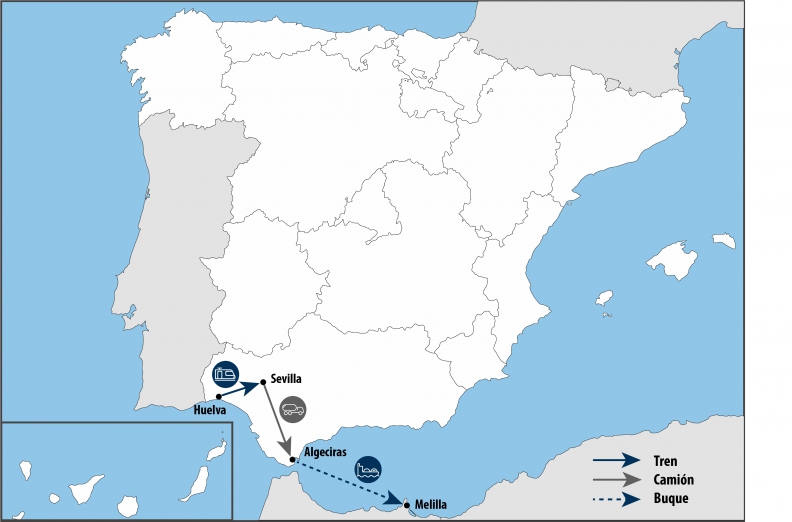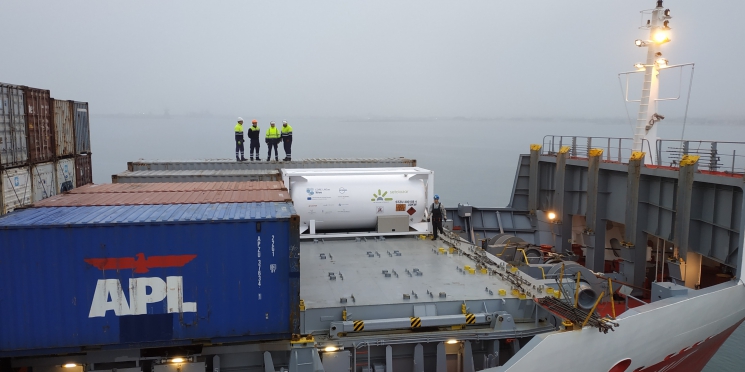Spain Moves LNG via Road/Rail/Sea
Spanish gas utility, Naturgy, said December 10 that it and nine other companies were involved in Europe's first pilot transportation by road, rail and sea of an LNG iso-container.
The iso-container (see banner photo, courtesy of Naturgy) was filled with LNG at Enagas’ terminal at Huelva late last month, from where it was trucked the short distance to the Huelva port railway terminal and there transferred to a train. The train travelled northeast to Majarabique station near Seville, where it was once again loaded onto a road truck November 26 for the longer journey to the port of Algeciras. There it was stored in the port's containers section on November 27 until December 2 when it was transferred onto a ship Helmut for the crossing to Melilla, one of Spain’s two north African enclaves, where it arrived December 4. (That sea journey was via Cartagena. The iso-container was later returned by ship by Algeciras arriving Dec.6)
Spanish rail operator Renfe’s freight company, LNG terminal owner Enagas, Spanish oil firm Cepsa, and the port authorities of Algeciras, Huelva, Melilla and Cartagena participated in the trial, as did the owner of the iso-container Setolazar and logistics operator Crisergas. It was undertaken through the 'CORE LNGas hive' clean transport initiative which regroups 42 partners, including several listed above, and is co-funded by the EU. The iso-container used in this instance was a 20-feet-long one, but others of 40-feet in length are available.
Portugal leads, Spain follows
In Europe, Portugal has been the pioneer of transporting LNG in iso-containers. Since March 2014 Portuguese logistics firm Grupo Sousa with LNG supplier Galp have transported by road and sea from Sines to Madeira (but not rail) and by August 2018 they had cumulatively transported a cumulative total of 100,000 tons of LNG to the island, where the regasified fuel accounts for about one-quarter of Madeira's overall energy mix and is chiefly used in power generation.
In addition to transporting LNG by train, Spanish firms said earlier in 2018 they were looking at also using it as a rail locomotive fuel.

Map showing the LNG container's road/rail/road/ship journey (Credit: Naturgy); tren = train; camion = road truck; buque = ship
Naturgy subsequently informed NGW that the sea crossing was via Cartagena, so not the straight line shown in the map above

The iso-container on board the ship Helmut for the sea crossing from Algeciras (via Cartagena) to Melilla (Photo credit: Naturgy)



